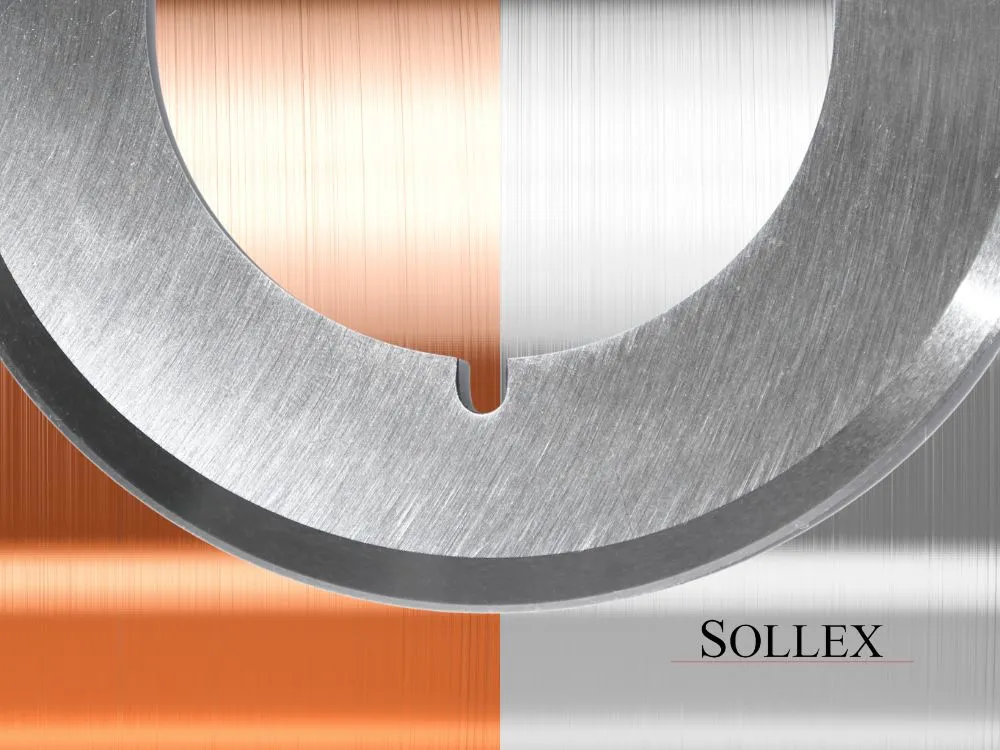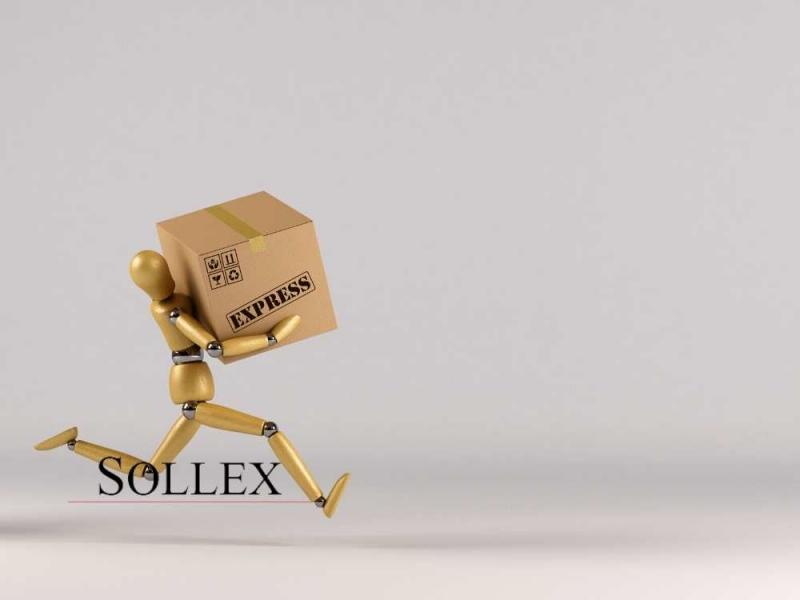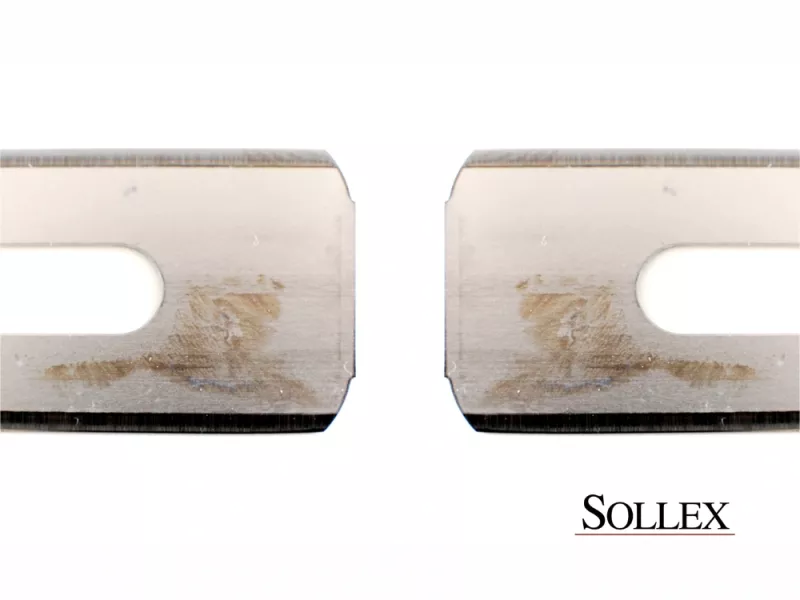How to Optimize Shear Slitting for Flexible Foils
Learn how to optimize shear slitting for flexible and metal foils by adjusting blade geometry, overlap, cant angle, and web tension.
In foil and flexible material converting, achieving clean slit edges and stable winding is not a matter of luck. It depends on how precisely the slitting station is set up. Every detail counts: from blade geometry and overlap to side pressure and web tension. Even small deviations can cause burrs, dusting, or faster wear of the blades.
Tangent or Wrap Slitting?
 CChoosing the right slitting method is the first decision that needs to be made. Tangent slitting is often preferred for cutting thin and flexible foils. To achieve the best results, use a fine tip grind angle of about 25–30 degrees, an overlap of approximately 0.7 mm, and a cutting face that is at least 2 mm wide.
CChoosing the right slitting method is the first decision that needs to be made. Tangent slitting is often preferred for cutting thin and flexible foils. To achieve the best results, use a fine tip grind angle of about 25–30 degrees, an overlap of approximately 0.7 mm, and a cutting face that is at least 2 mm wide.
For general-purpose materials, both tangent slitting and wrap slitting are effective when using a tip grind angle of 35–45 degrees. In wrap slitting, the web partially wraps around the bottom knife, which provides more stability and control. This method is suitable for slightly thicker or multilayer materials.
Blade Geometry and Overlap Settings
The geometry of the knife edge determines how efficiently it cuts through the material. Bevel profiles such as 30, 45, or 60 degrees, or compound grinds like 45 + 15 degrees, can be selected depending on the type and thickness of the material.
The overlap depth, where the upper and lower blades intersect, should usually be between 0.5 and 0.75 mm, or adjusted according to foil thickness. Too much overlap shifts the cut point forward, causing the web to be slit before it is fully supported by the lower knife. This results in burrs, dusting, or fine edge cracks. Too little overlap, on the other hand, leads to incomplete cuts or tearing.
The cut point should occur inside the wrap area, where the web is in contact with the bottom knife. This provides a stable and accurate cutting position and reduces foil lifting or tearing.
Cant Angle and Side Force
The cant angle, sometimes called the shear angle, ensures that the two blades maintain a closed nip, like the blades of scissors. The right cant angle depends on the web’s elongation and stiffness. A practical rule is: low-elongation materials = small cant angle, and high-elongation materials = larger cant angle. For most converters, a range of 0.5 to 1 degree works well.
The side force, the lateral pressure between the top and bottom blades, drives the upper blade’s rotation and determines contact pressure at the nip. Too little pressure causes slippage and incomplete shearing; too much increases heat, friction, and blade wear. In general, aim for the lightest pressure that still allows the bottom knife to drive the top knife and maintain a closed nip.
Precision and Stability
Mechanical precision is just as important as blade setup. Minimizing both axial and radial runout reduces blade wobble and helps to maintain consistent slit width. Regular inspection and maintenance of knife holders and slitting stations ensure longer blade life and predictable performance over time.
Controlling Tension, Heat, and Aluminum Powder
Proper tension control prevents stretching or tearing during slitting. If the tension is too high, the foil can deform or curl; if it is too low, wrinkles and poor edges can occur.
At high line speeds, friction between the knives generates heat and fine aluminum powder. This powder should be collected efficiently to prevent it from settling on the web surface. Otherwise, it can cause pitting during the next winding stage. Excessive heat can also make the powder stick to the blade edge, which quickly dulls it. Use blades with mirror-polished or low-friction coatings to reduce adhesion and keep temperatures stable. For these demanding applications, tungsten carbide or coated polished blades from Sollex offer excellent wear resistance and precision.
Order Slitting and Converting Knives for Foils
Optimizing shear slitting is all about precision rather than force. Correct tip angles, controlled overlap, light side pressure, and stable web tension result in cleaner cuts and longer intervals between blade changes. For battery and electrode foils, where dry slitting without lubrication is mandatory, see our article Dry Slitting of Battery Foils: Clean Cutting of Copper and Aluminum Without Lubrication. It covers how to achieve burr-free edges under strict cleanliness constraints. Read it here: Dry Slitting of Battery Foils.
Sollex supplies high-quality shear slitting blades made for foil and flexible material converting. Our blades are designed for consistent performance, long life, and clean cuts even in demanding production environments.
FAQ
Q: What is the ideal overlap when slitting aluminum foil?
A: For most foils, the overlap should be between 0.50 and 0.75 mm. The exact value depends on the material thickness and stiffness. Too much overlap causes burrs, while too little may leave uncut fibers or edges.
Q: Which is better for thin flexible foils, tangent or wrap slitting?
A: Tangent slitting usually provides better control for thin and flexible materials because it requires less wrap and minimizes tension variations. For thicker or laminated webs, wrap slitting provides more stability.
Q: What happens if side loading pressure is too high?
A: Excessive side pressure shortens blade life and causes heat buildup, which can lead to aluminum dust sticking to the blade edge. It can also create a rougher slit edge.
Q: Why is temperature control important in foil slitting?
A: High temperature makes aluminum powder stick to the blade, reducing sharpness and cut quality. Keeping the system cool helps maintain consistent cutting performance and prevents defects on the slit material.
Q: How often should slitter blades be checked or replaced?
A: This depends on the production speed, material type, and blade quality. Regular visual inspection for edge wear and build-up is essential. Using precision-engineered blades like those from Sollex helps extend replacement intervals.





![Sollex awarded with AAA rating by Bisnode [2025] Sollex has been awarded AAA credit rating 2025 by Bisnode - Blog](https://cdn.starwebserver.se/shops/sollex-se/files/cache/johan-falk-sollex-vd-ceo-aaa-business-awards-2025-1_grande.webp?_=1763540059)